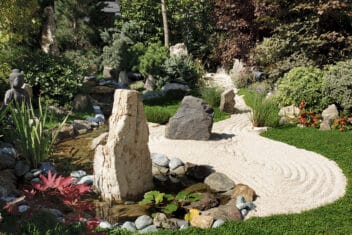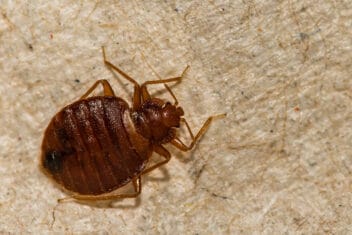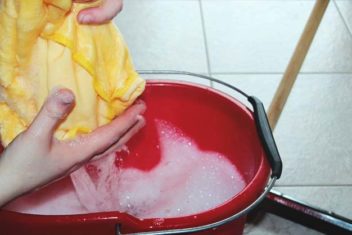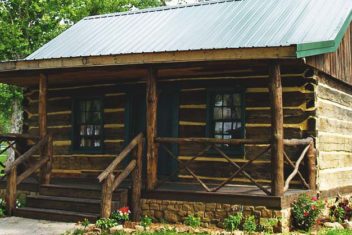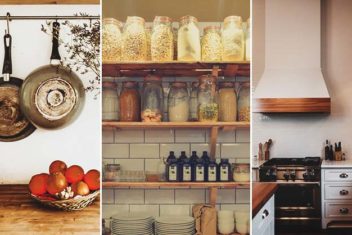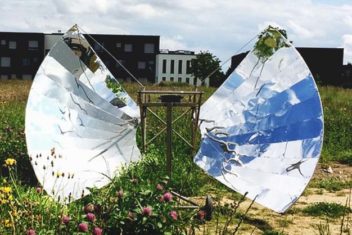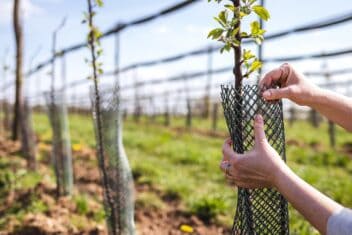Christmas is right around the corner and I’ve already begun to decorate my home with holiday accents. The wreath on my door is up, string lights have been strung, and tinsel has been tossed – and don’t forget all the wonderful Christmas plants that I’ve put in place.
I love this time of year for the decorations, but I’m just as excited about the plants on offer during the holiday season. I can’t wait to put out my poinsettias and nibble on those Valencia oranges. It just wouldn’t be the holidays without the plants that make the season.
Below, you’ll find a list of plants with Christmassy-ties and applications. From edible plants to use for Christmas dinner to plants beautiful enough to gift to your Secret Santa.
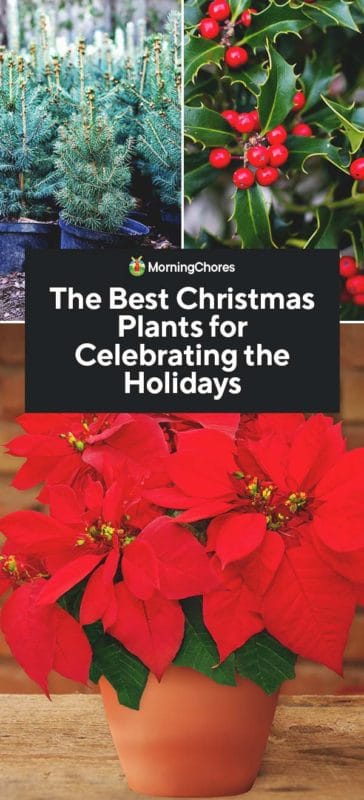
Christmas Plants for Cooking
Which edible plants do you think of when the holidays come around? Here are a few options to consider for your holiday feast:
1. Root Vegetables
Did you know that many root vegetables – carrots, parsnips, and beets – improve flavorwise when exposed to cold weather? Leave them in the ground until you’re ready to harvest. In some areas, that means they’re at peak flavor right around the holidays.
Personally, I’m always bummed at the lack of vegetable sides during the holidays. Yes, I know. Stuffing is so good, and no one wants to skip that serving of meat pie with a delectable, flaky crust. However, I wish veggies made more of an appearance.
2. Herbs
The right seasoning makes a meal, IMHO. There are a variety of herbs that I’d recommend having on hand for the holiday season: rosemary, thyme, and sage are all top of my list.
Many popular wintertime herbs are relatively hardy, depending on your zone. Herbs are also easy to grow indoors. They even make a delightful centerpiece or decor item. Rosemary, for instance, looks adorable when trimmed into a Christmas tree shape.
3. Cranberry Bush
In my household, cranberry sauce is a must-have at the holiday dinner table. I’m not picky. There’s nothing wrong with the canned stuff. I often have cans of cranberry sauce in my pantry when I’m craving a holiday-style dinner.
Make it from scratch, though, and you can put your own spin on this traditional side. You can further impress your guests by using homegrown berries to make your sauce. Cranberry shrubs prefer sunny conditions and aren’t picky about soil, though areas where water pools should be avoided. Grow cranberries even in cold locales as they’re hardy in zones 2-7.
4. Valencia Oranges
Some cultures have long included oranges in their holiday traditions. A bit of digging revealed that there’s more than one reason some people fill stockings with citrus fruits or include them at the holiday table. This article from TheKitchn outlines all of the potential reasons for the citrus fixation. One of the explanations? That at one time, oranges were a true delicacy.
5. Pepper Plant
Pepper plants don’t have any real ties to the holiday season, but I think they make a great gift or decor item. Ornamental chili peppers provide a burst of red coloring, and it’s a spin on some of the more traditional plants.
Plants for Decorating Indoors
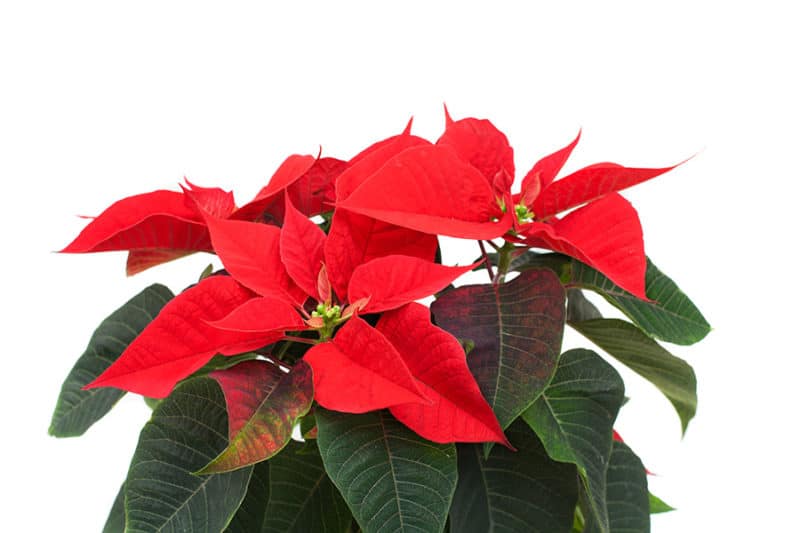
Use any of these plants to decorate indoors to a festive atmosphere. The following plants also work as table decorations or centerpieces. Many of them are equally excellent living gift options.
1. Pointsettia
This is probably one of the main Christmas plants you’ll see sold in garden centers and supermarkets. Its popularity is mainly due to its red and green coloring that blends in seamlessly with the Christmas season palette.
A lot of people tend to toss their poinsettia plants after the holidays, but it’s possible to keep them alive for a lot longer than a few weeks. Give your plant plenty of light and keep it away from your home’s entrances and windows, where it will likely experience exposure to cold drafts.
2. Christmas Cactus
When this plant flowers, it sure is a spectacle! It’s another plant that’s fairly easy to keep alive year-round. They’re called Christmas cacti because they bloom around the holidays. Plants are available in a variety of bloom hues. Keep in mind that you’re dealing with a tropical plant, so you may need to provide it with humidity during the dry winter months.
3. Holly
When I think about the holly plant, I’m reminded of lyrics to a Christmas song I used to hear often: the holly and the ivy. Holly is frequently featured as a symbol in a variety of Christmas-related decor. You’ll find images of the spiky leaves and red berries on Christmas cards, wrapping paper, and gift tags.
Holly is also heavily featured in Christmas wreaths because the crown of jagged foliage has religious connotations representing the story of the crown of thorns placed on Jesus’ head during the crucifixion. If you decide to grow full holly bushes outside, choose a well-drained spot with acidic soil. You should also plant a female bush because male bushes don’t produce the classic red berries that holly is known for.
4. Mistletoe
Oddly enough, mistletoe isn’t something you’d grow yourself because it’s a kind of parasitic plant that sucks nutrients and moisture from the host it has attached itself to. So why do we find it hanging around during the holidays? The tradition is more European than North American, and we kiss under the mistletoe thanks to a Scandinavian myth.
5. Christmas tree
One of my favorite holiday traditions is picking out a Christmas tree. My husband and I aren’t religious, but we love the winter season and enjoy bringing a piece of nature inside to decorate.
The tradition apparently started in Germany during the 16th century. Trees were selected because of their triangular shape, which symbolizes the holy trinity. We adorn our living room with a tree for non-religious reasons, but picking it out still feels like an important activity. I always feel deeply attached to my chosen tree, and I’m usually drawn to the short, stubby ones.
6. Amaryllis
Red-colored amaryllis is typically sold around the holidays, and the plant is quickly surpassing the poinsettia in popularity as a Christmas plant. The flowers are a little more delicate than poinsettias, and the blooms are a lot showier. Deadhead the flowers after the blooms fade to ensure the potential for blooming in the following year.
7. Ivy
Despite its leafy appearance, ivy is an evergreen plant that was once used in the celebration of the non-Christian Winter Solstice Festival. Over time, Christianity has adopted the ivy plant and used it to symbolize a connection to God.
8. Christmas Rose
Also known as black hellebore, Christmas rose is a perennial evergreen that features tiny, delicate white roses. Plant it outside or buy it potted to decorate your home. Careful, though, the plant is poisonous, and care should be taken in households with pets or children.
Plants for Decorating Outdoors
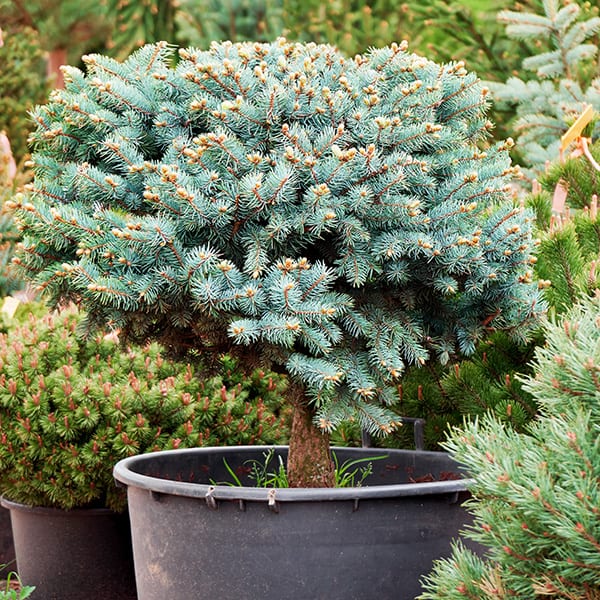
I live in Canada where winters are cold and filled with snow and ice. It’s tough to grow anything during the wintertime without a bit of foresight. Here are a few outdoor plants perfect for planting outdoors in anticipation of the holiday season:
1. Japanese Yew
This evergreen shrub is also known as ‘spreading yew.’ It’s native to Japan but is hardy down to zone 4, which makes it a suitable winter shrub. It can grow up to 40-feet tall, but with proper pruning can be contained. The Japanese Yew produces tiny red berries, which is another reason to consider it for your ornamental winter garden.
2. Potted Blue Spruce
This evergreen is the ideal choice for your front porch or entryway. A potted spruce plant requires proper drainage, so be sure to add holes in pots to let the water drain. Blue spruces prefer acidic soil and grow in a distinct pyramidal shape.
3. Winter Gem Boxwood
These compact shrubs feature yellow flowers instead of red ones and make excellent hedges. Like blue spruces, they look great potted in an entryway or on a front porch because they’re easy to prune and shape accordingly. They grow up to 6-feet in height and require regular watering, especially during hot conditions.
Plants for Gifting
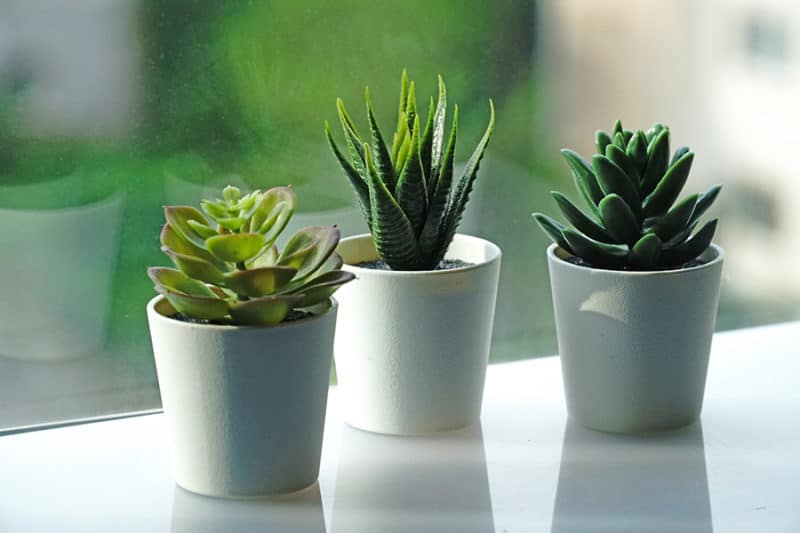
If it’s cold in your neck of the woods, avoid gifting sensitive plants like orchids or other tropical flowers. Choose hardy succulents and herbs to give as gifts, instead.
Need a low-cost table accent or favor that everyone can go home with after dinner? Succulents are inexpensive and commonly sold in bulk. They’re the perfect addition to a woodland tablescape.
Using Christmas Plants if You Don’t Have a Green Thumb
If you’re not someone with a green thumb, there’s absolutely nothing wrong with adding holiday-themed artificial plants around your home. If you’re on a budget and don’t have the cash to purchase new plants to accent your holiday decor, why not add decorations to existing plants in your home? String tinsel around your showpiece houseplant or fill your plant vase or pot with sparkly ornaments.

